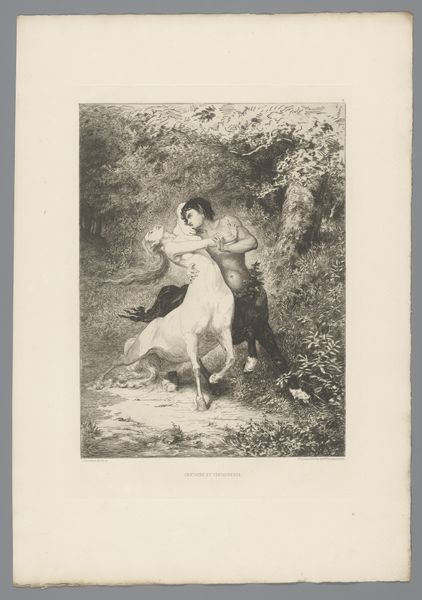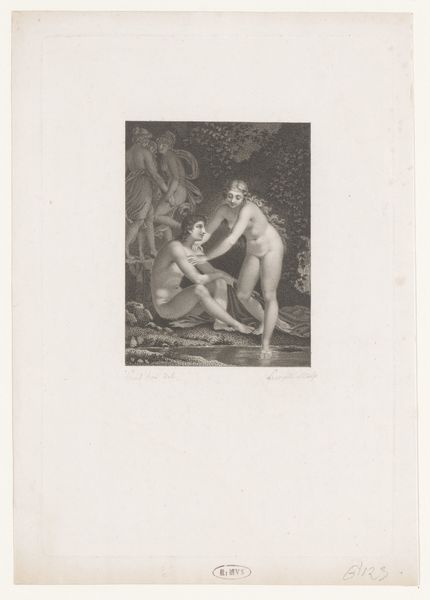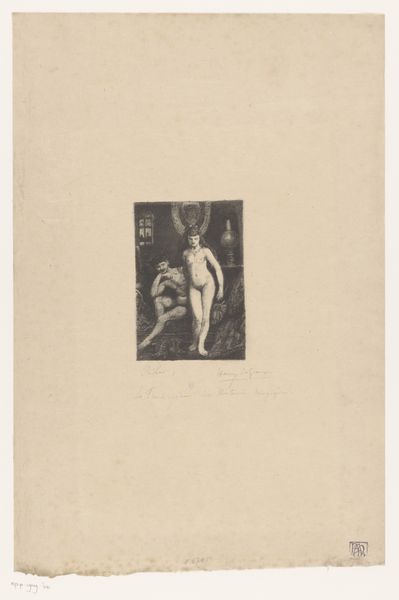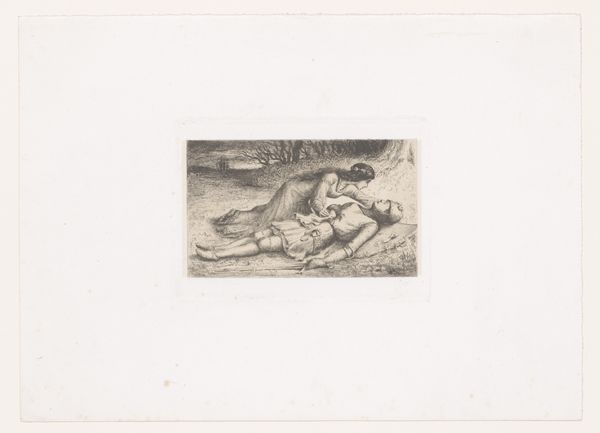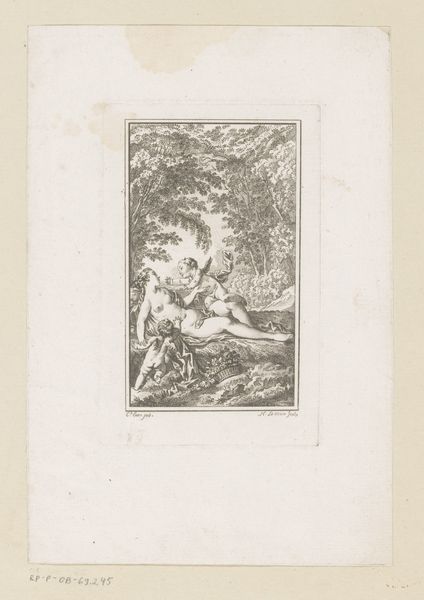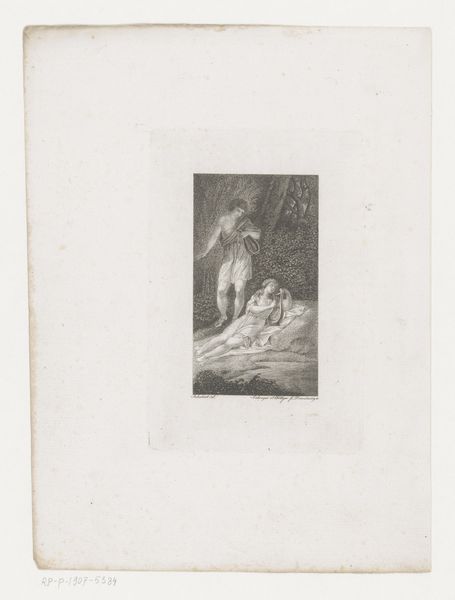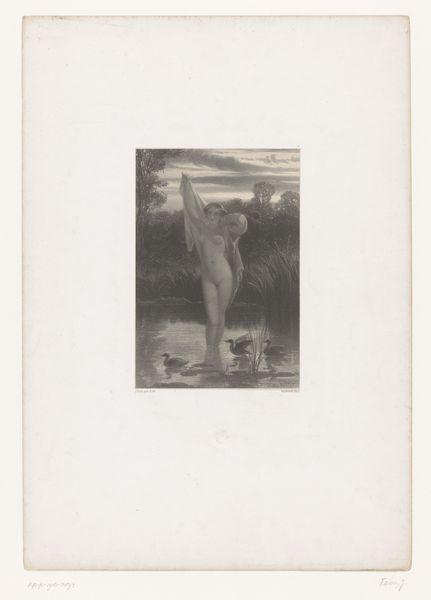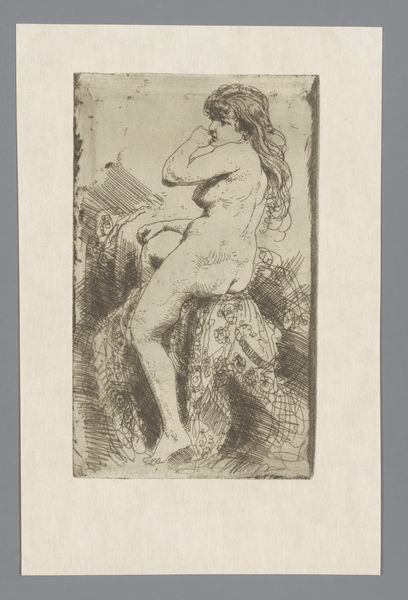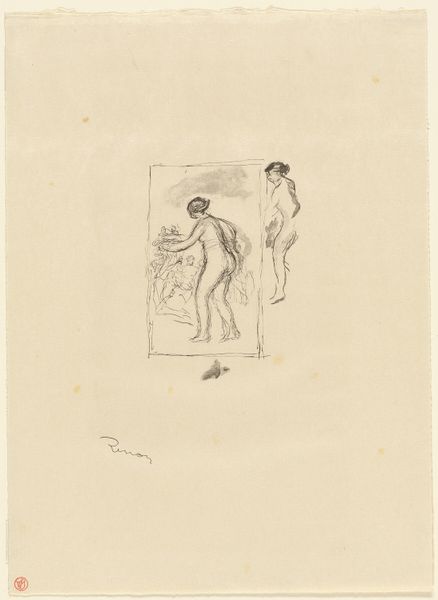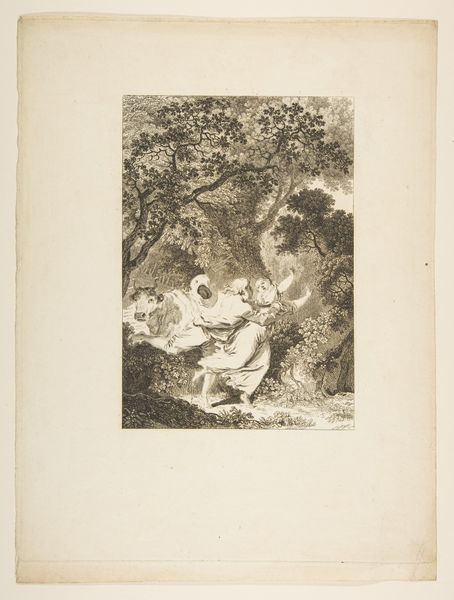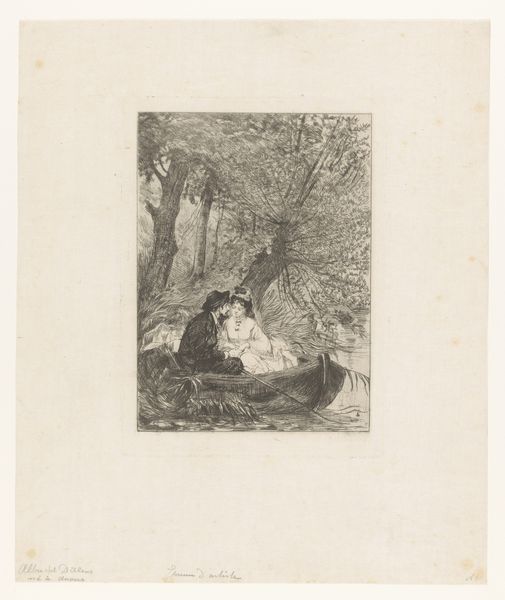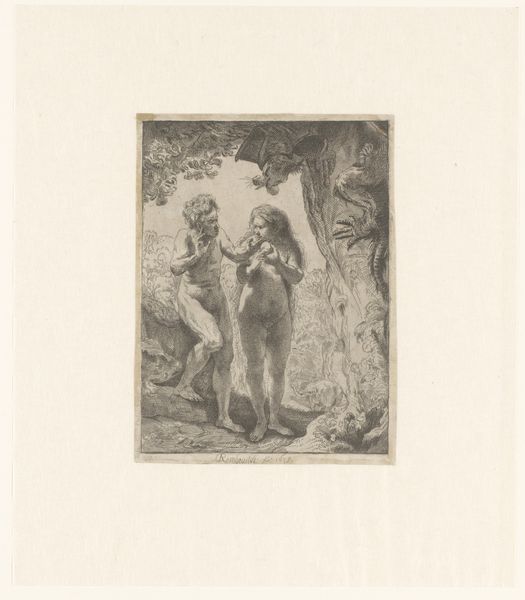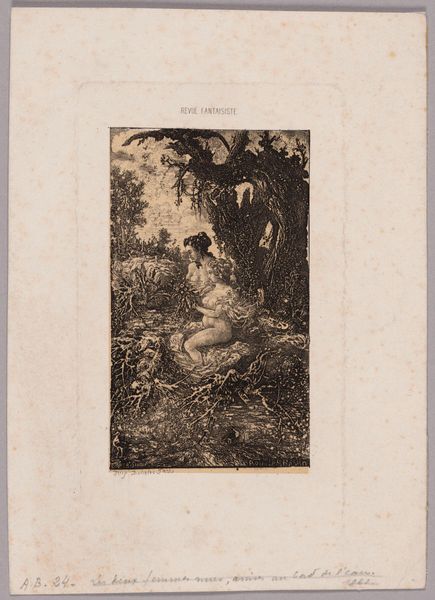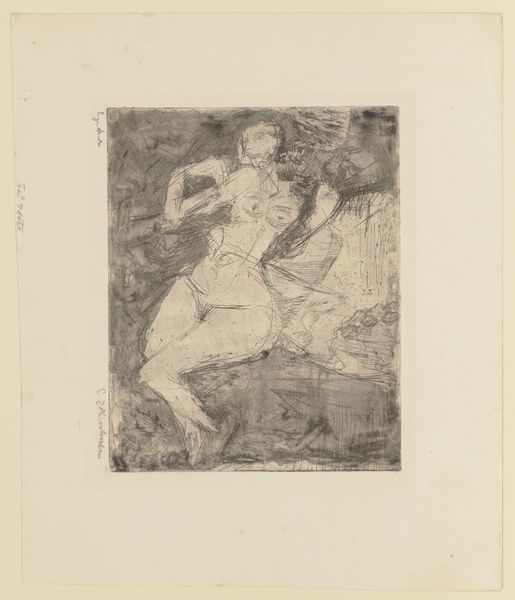
print, engraving
# print
#
figuration
#
romanticism
#
genre-painting
#
history-painting
#
nude
#
engraving
Dimensions: height 246 mm, width 165 mm
Copyright: Rijks Museum: Open Domain
This print, "Daphnis en Chloë badend", was made in the 19th century by Hyacinthe-Louis-Victor-Jean-Baptiste Aubry-Lecomte. It exemplifies the power of engraving, a process of cutting lines into a metal plate, in this case likely copper, to hold ink and transfer an image onto paper. The engraver meticulously carves lines of varying depths and densities, creating a range of tones from light to dark. The crispness of the lines gives the image its distinct visual texture. Aubry-Lecomte would have used specialized tools like burins to achieve this precision. Engraving was a skilled trade, demanding years of apprenticeship to master. In the 19th century, it played a crucial role in reproducing images for mass consumption, spreading art and information through printed books and illustrations. The labor-intensive nature of the craft is a world apart from today's digital reproduction techniques, reminding us of the value once placed on manual skill and artistry. Ultimately, appreciating the craft behind this engraving allows us to reconsider the cultural significance of accessible art.
Comments
No comments
Be the first to comment and join the conversation on the ultimate creative platform.
